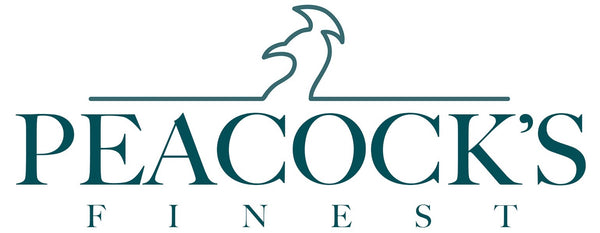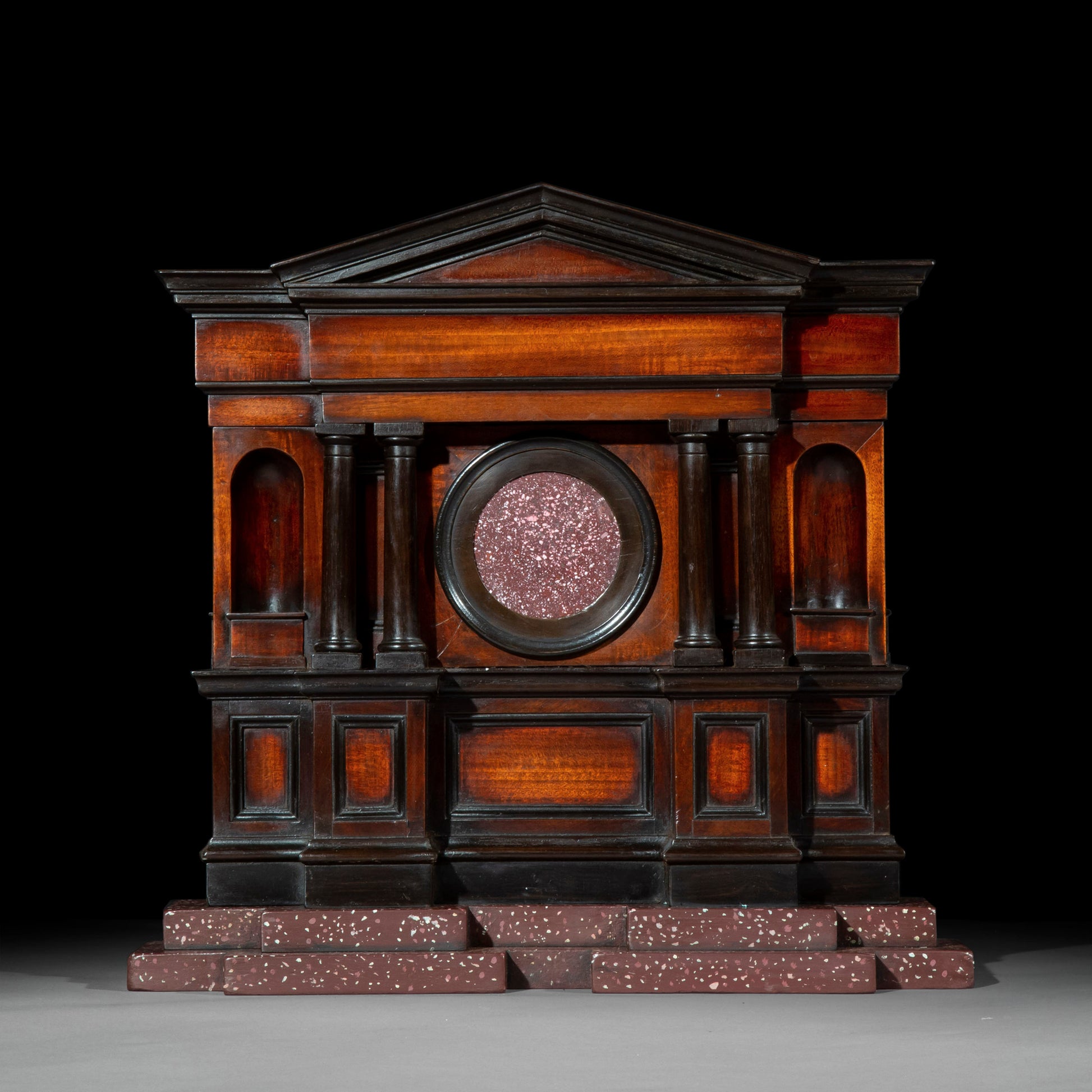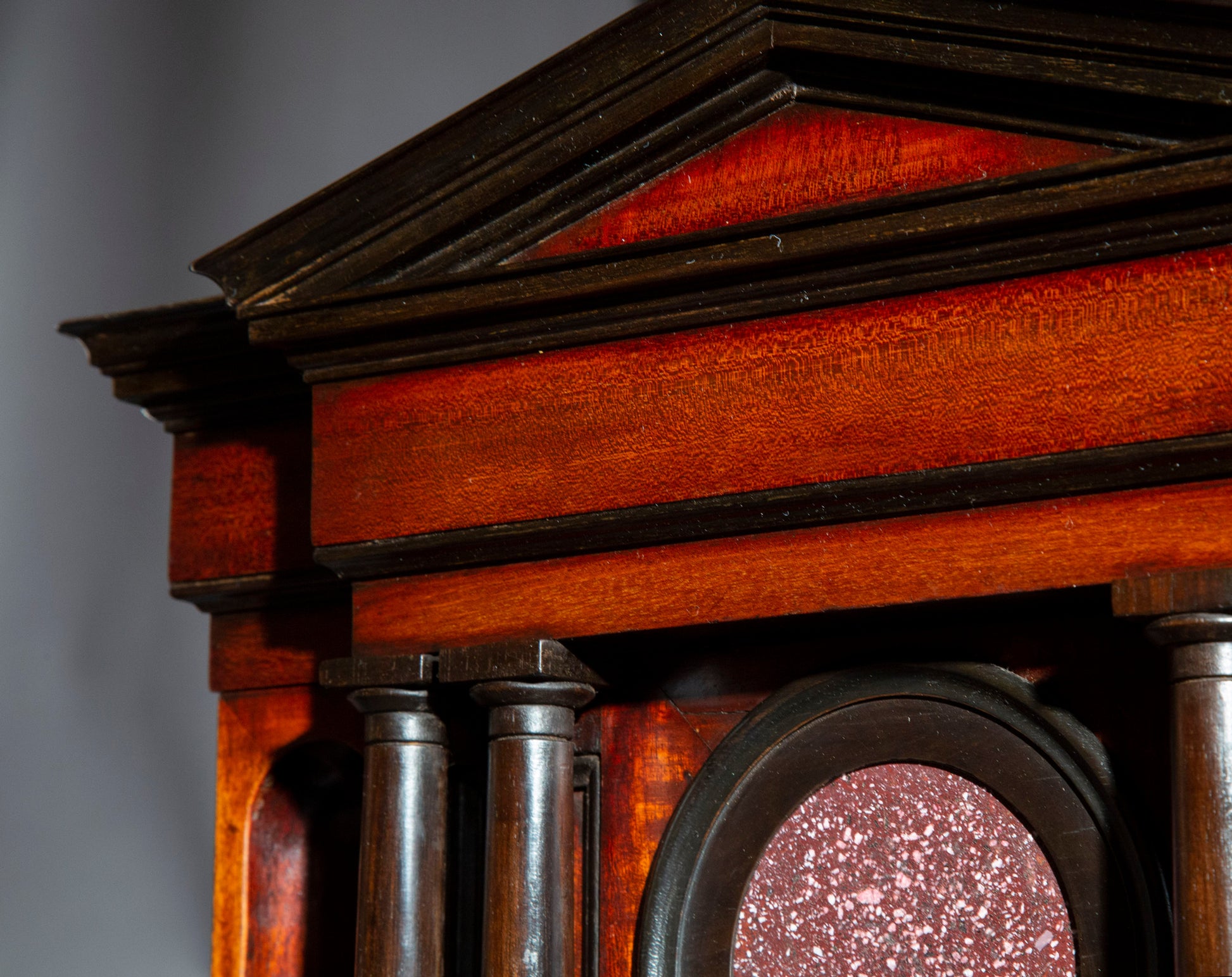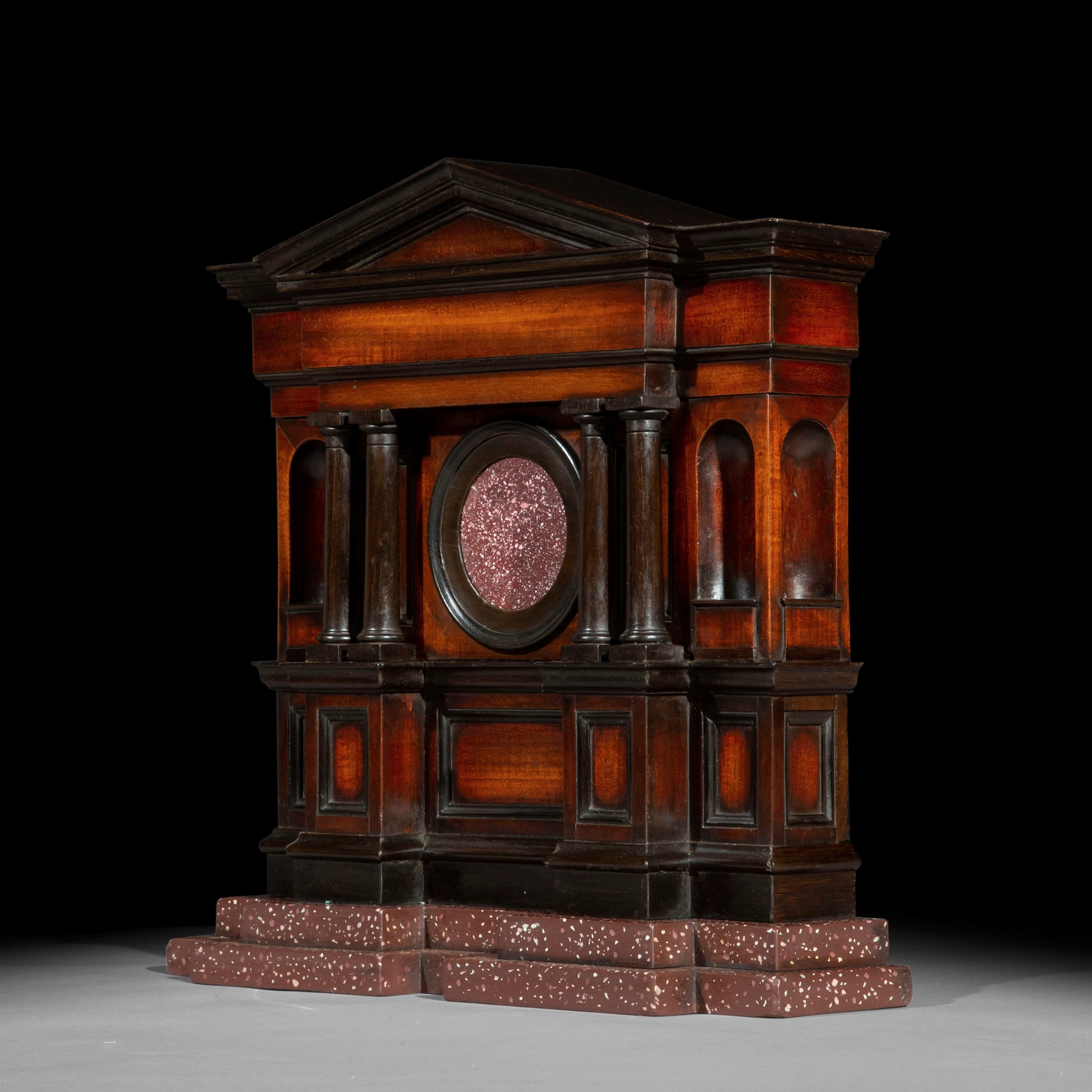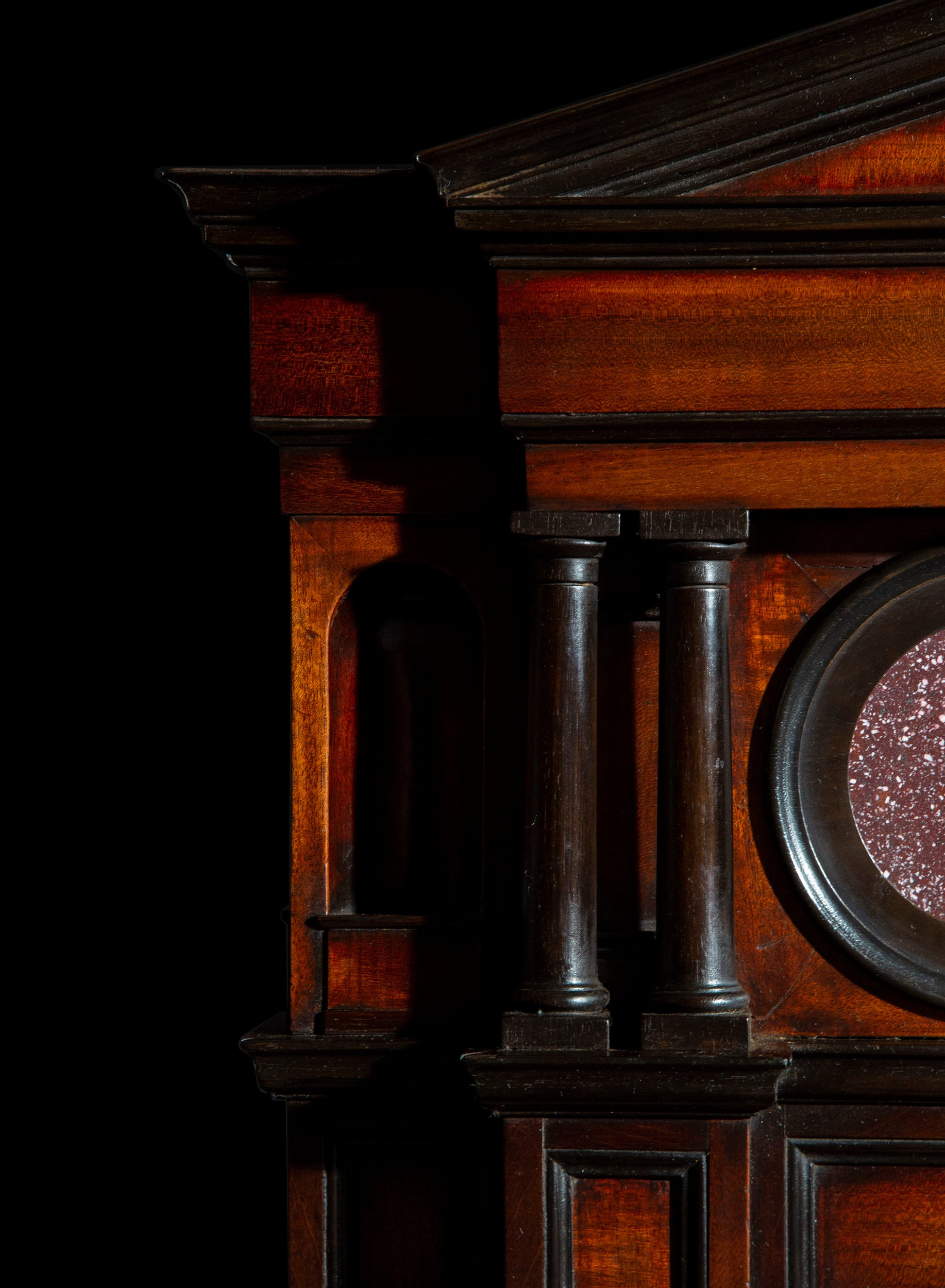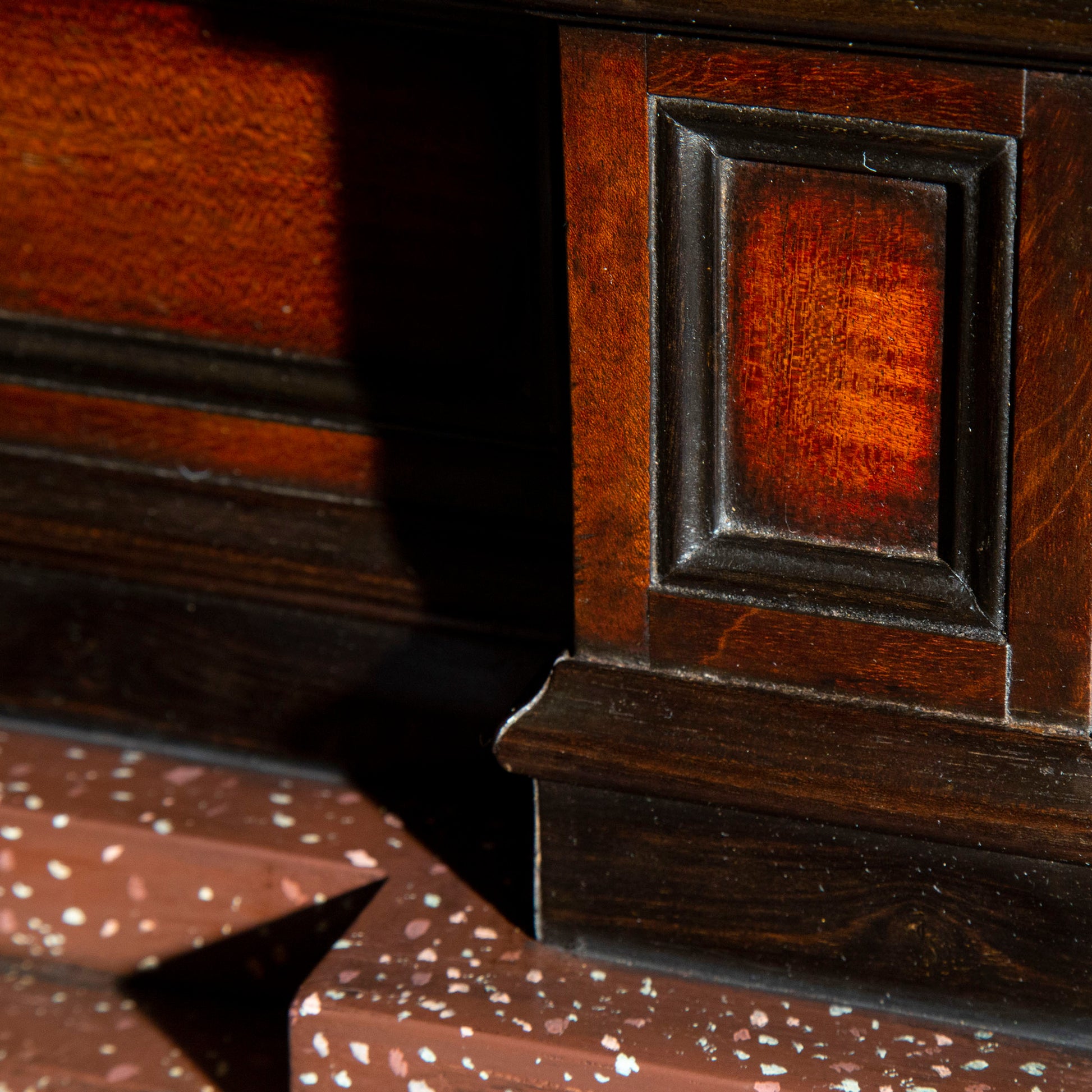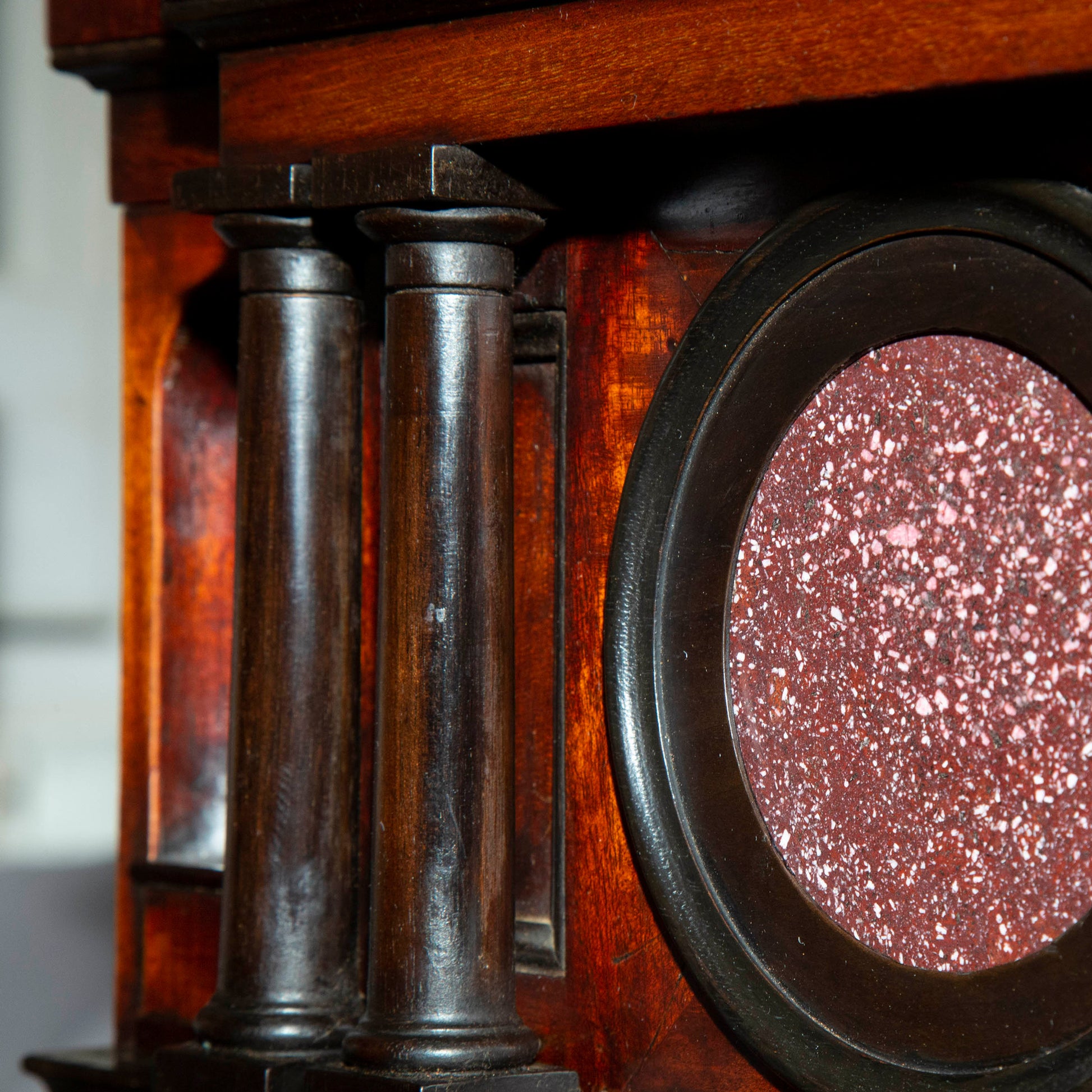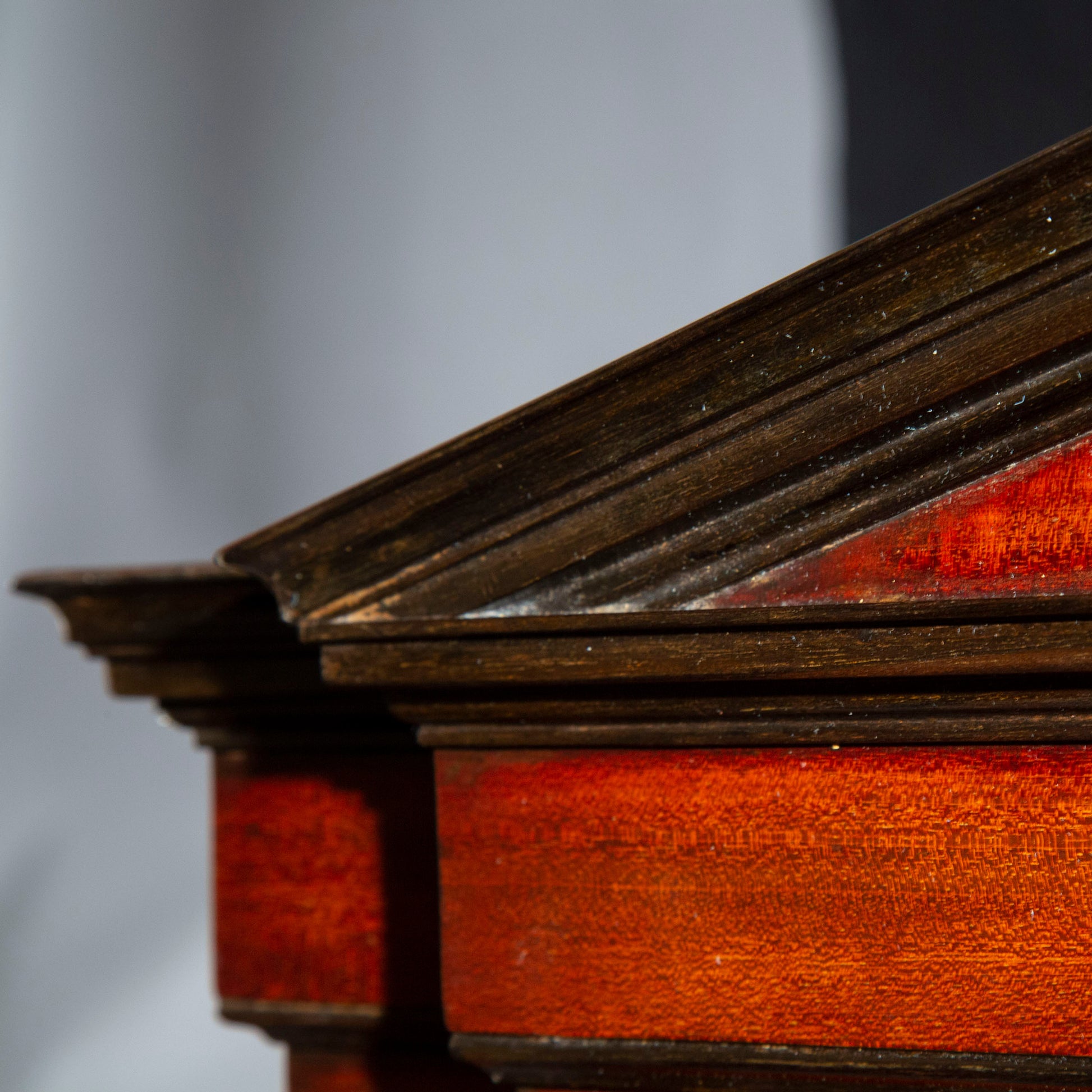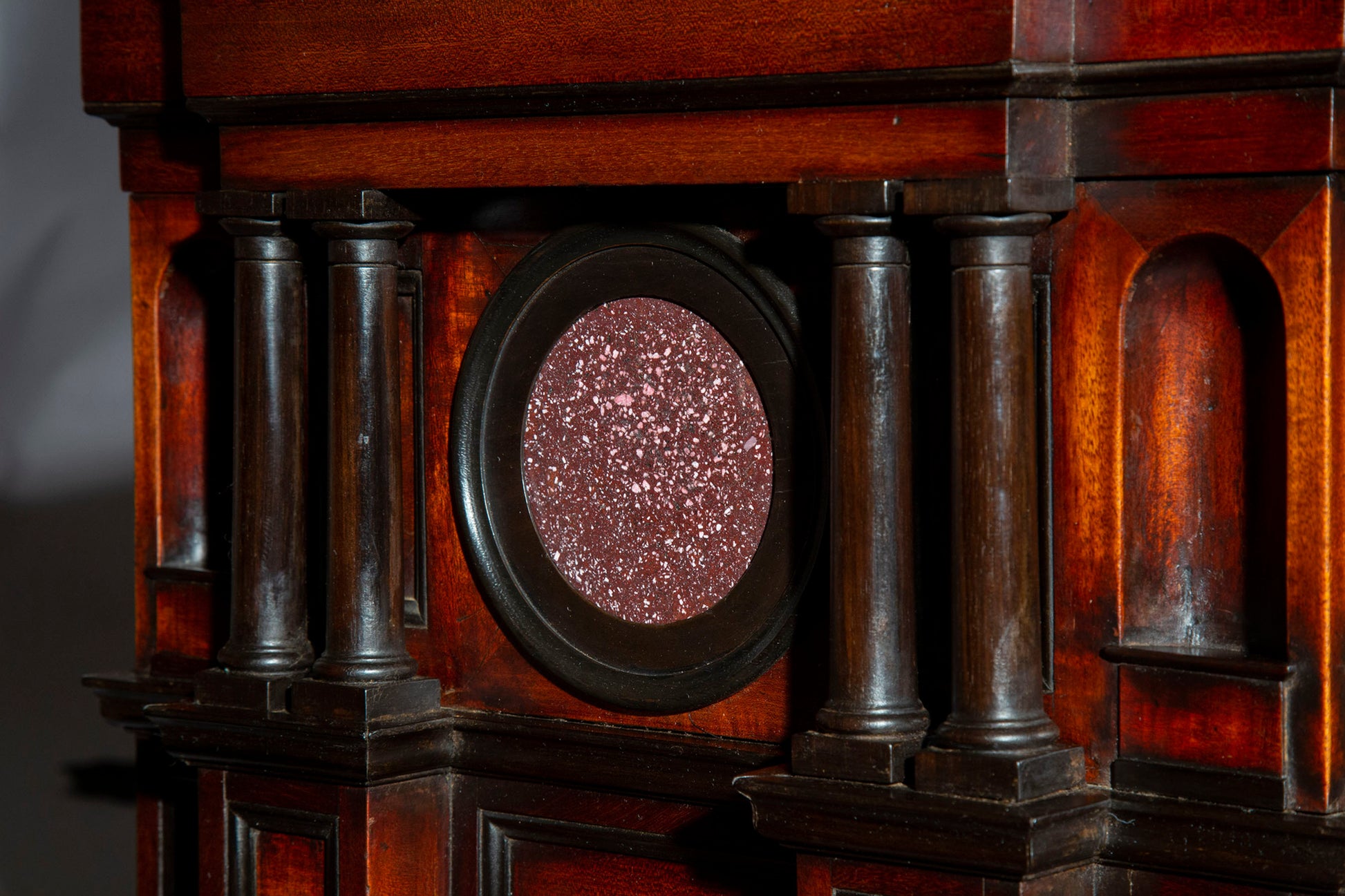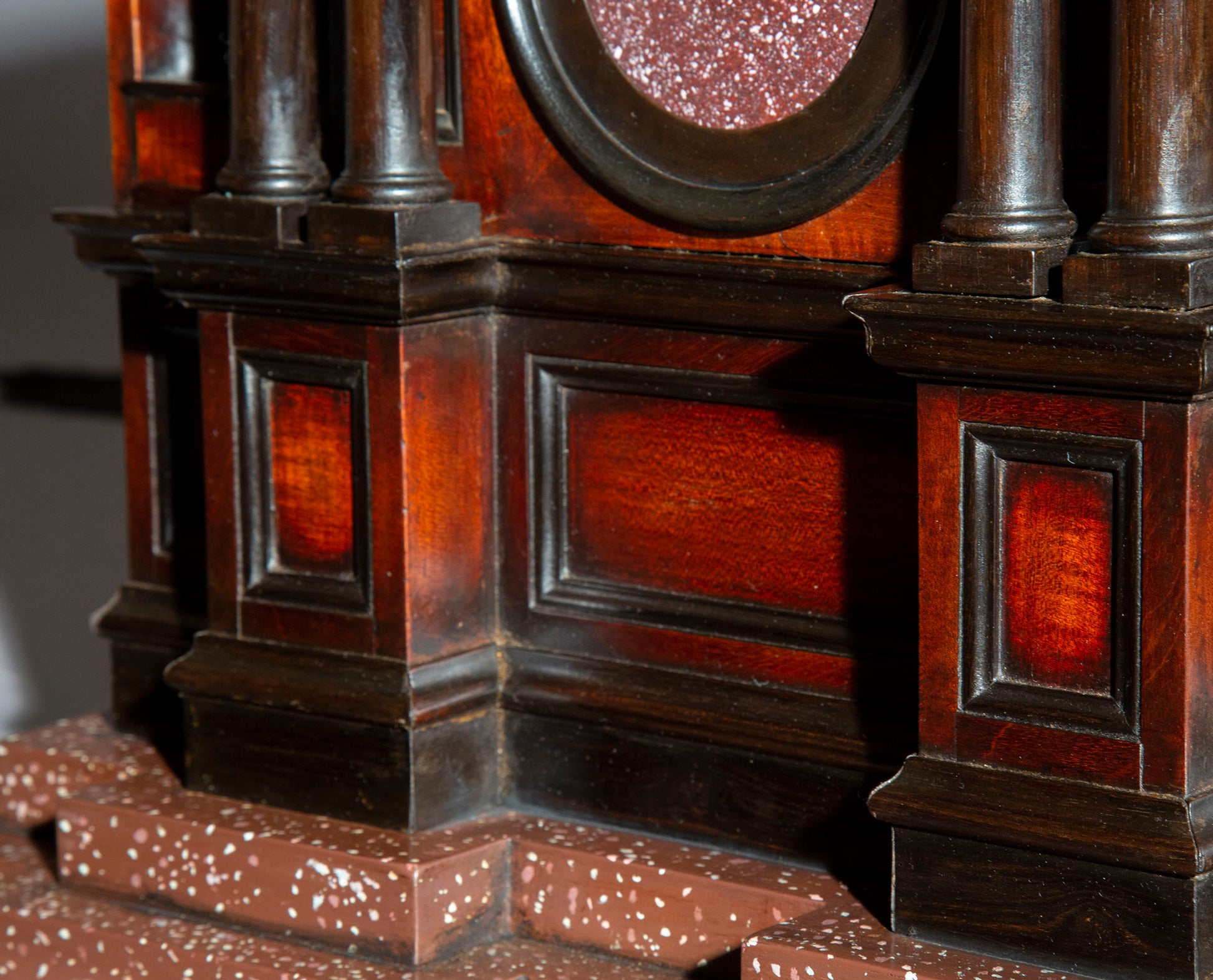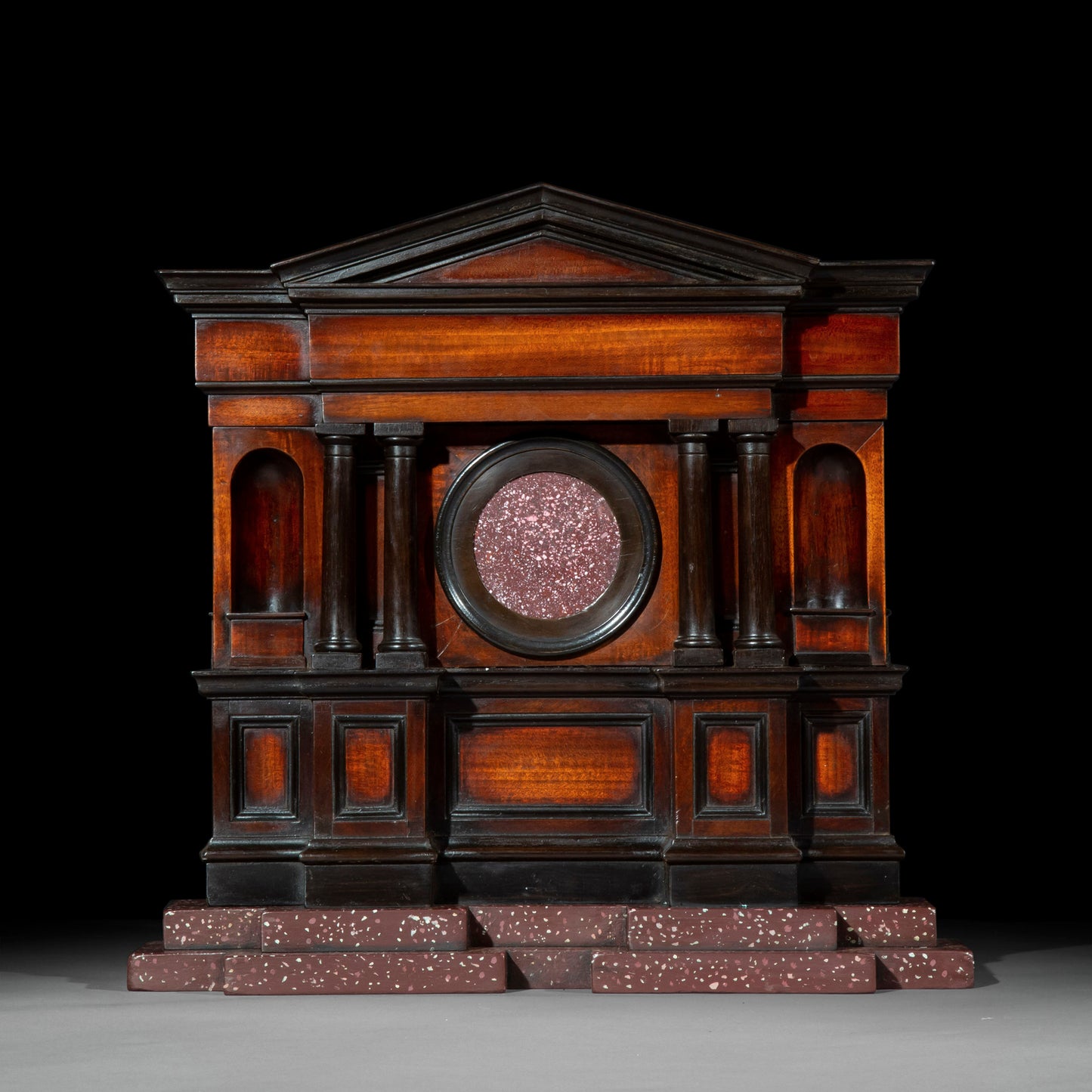
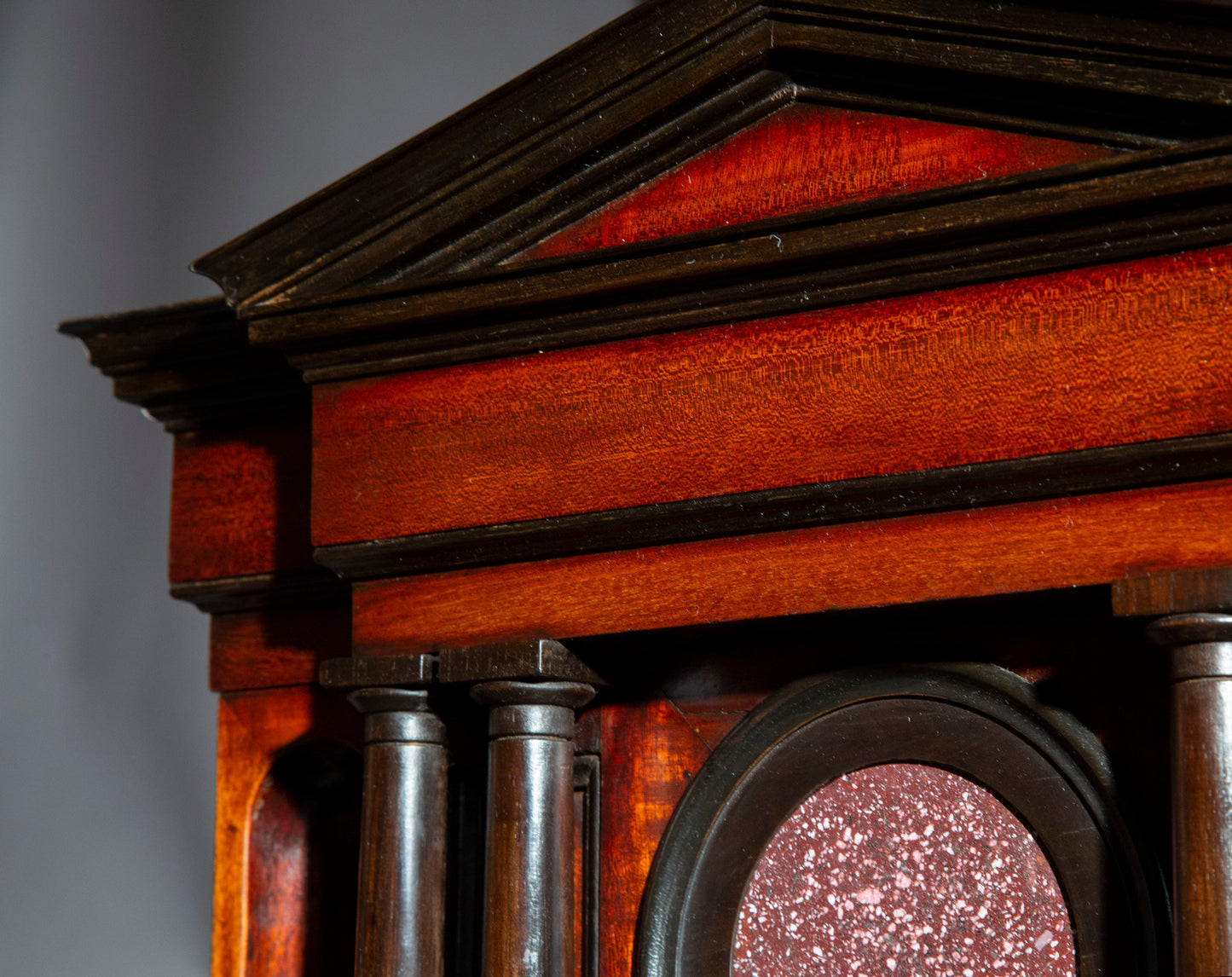
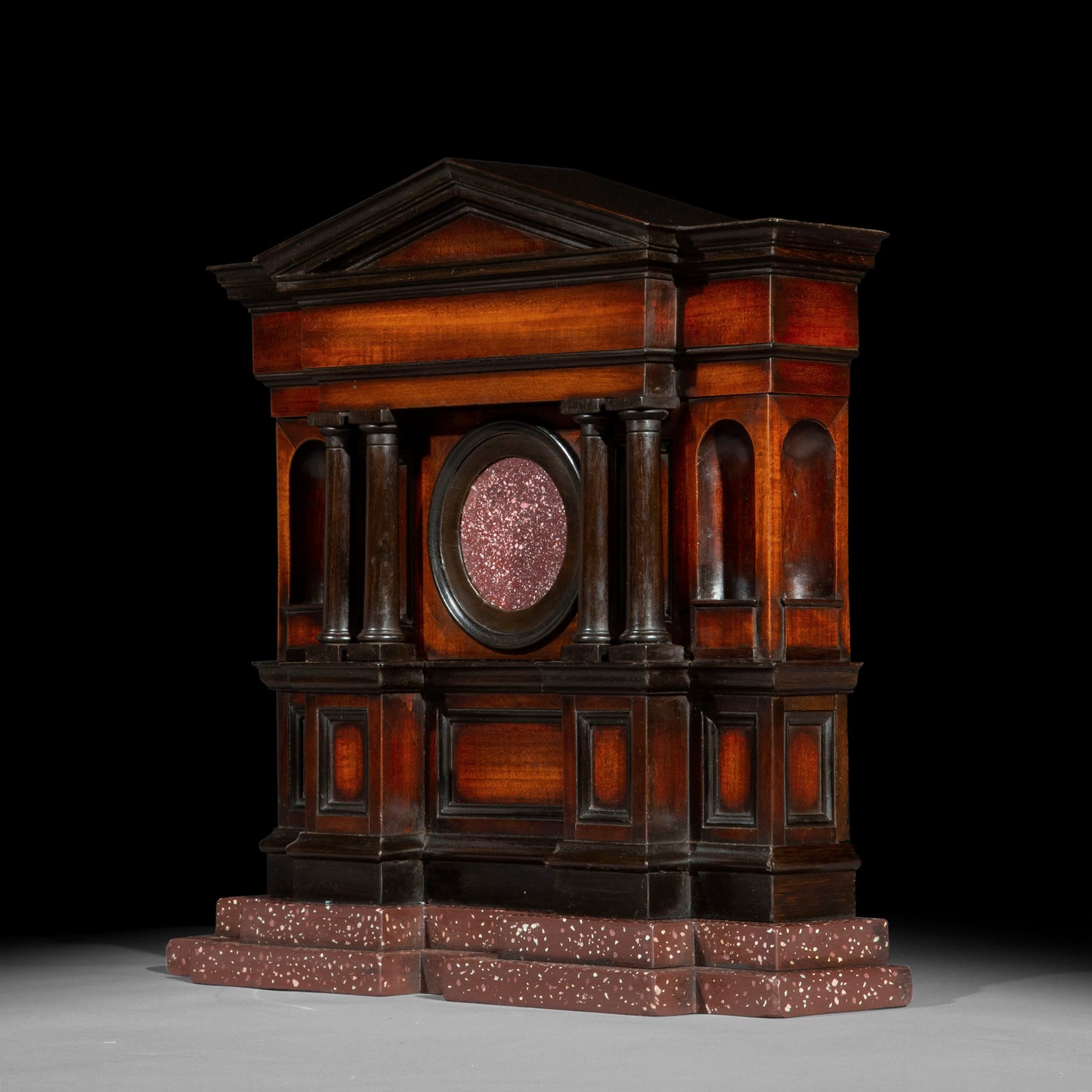
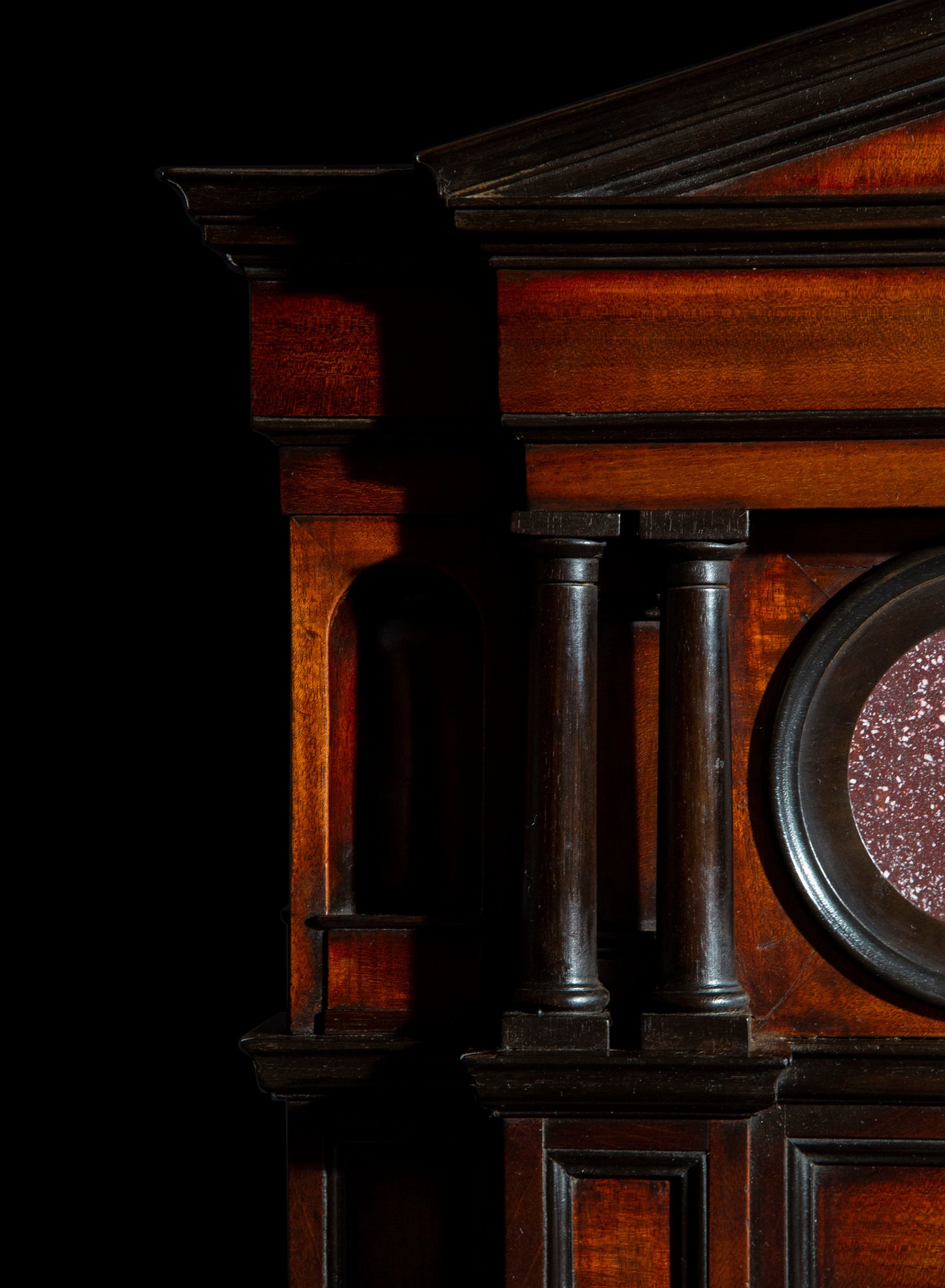
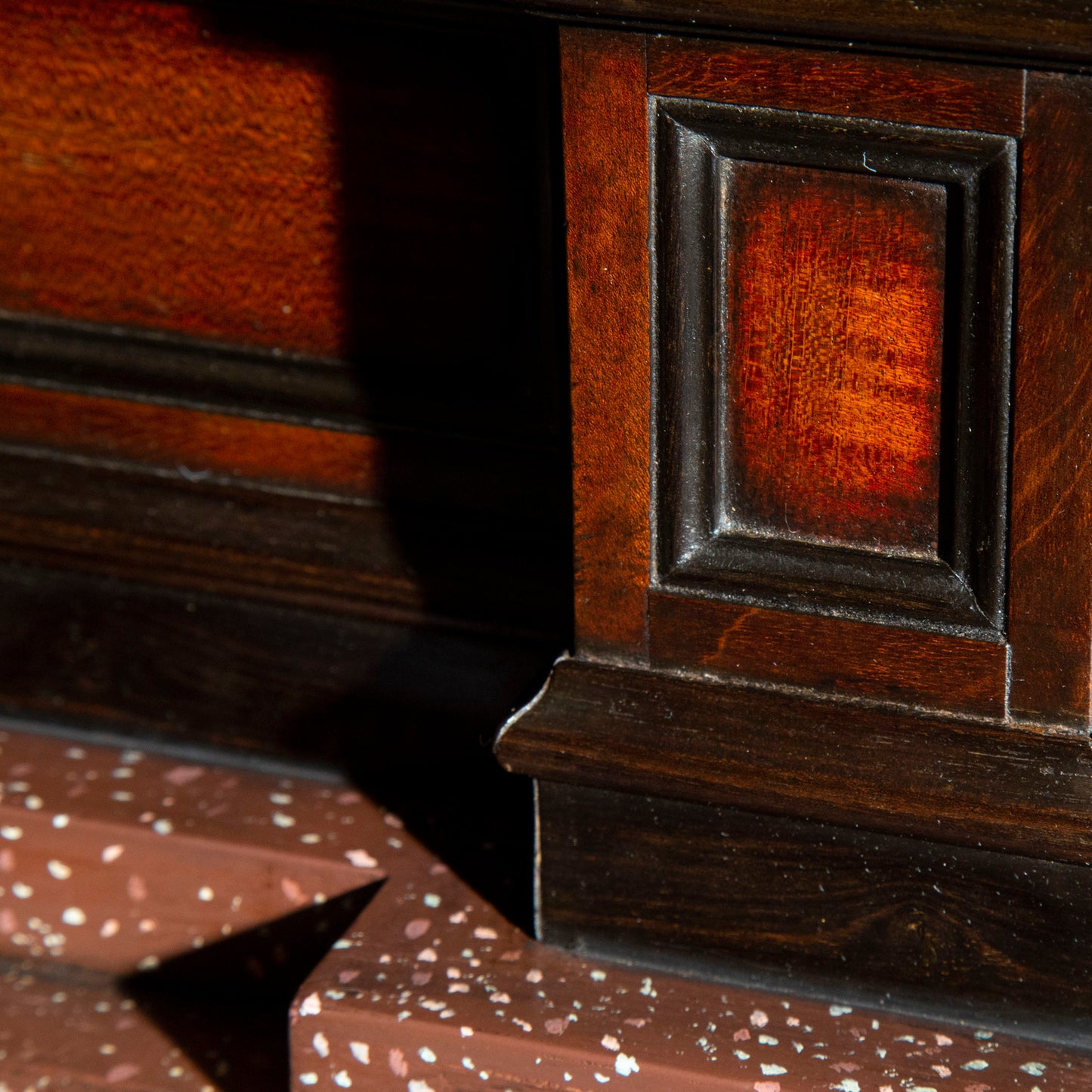
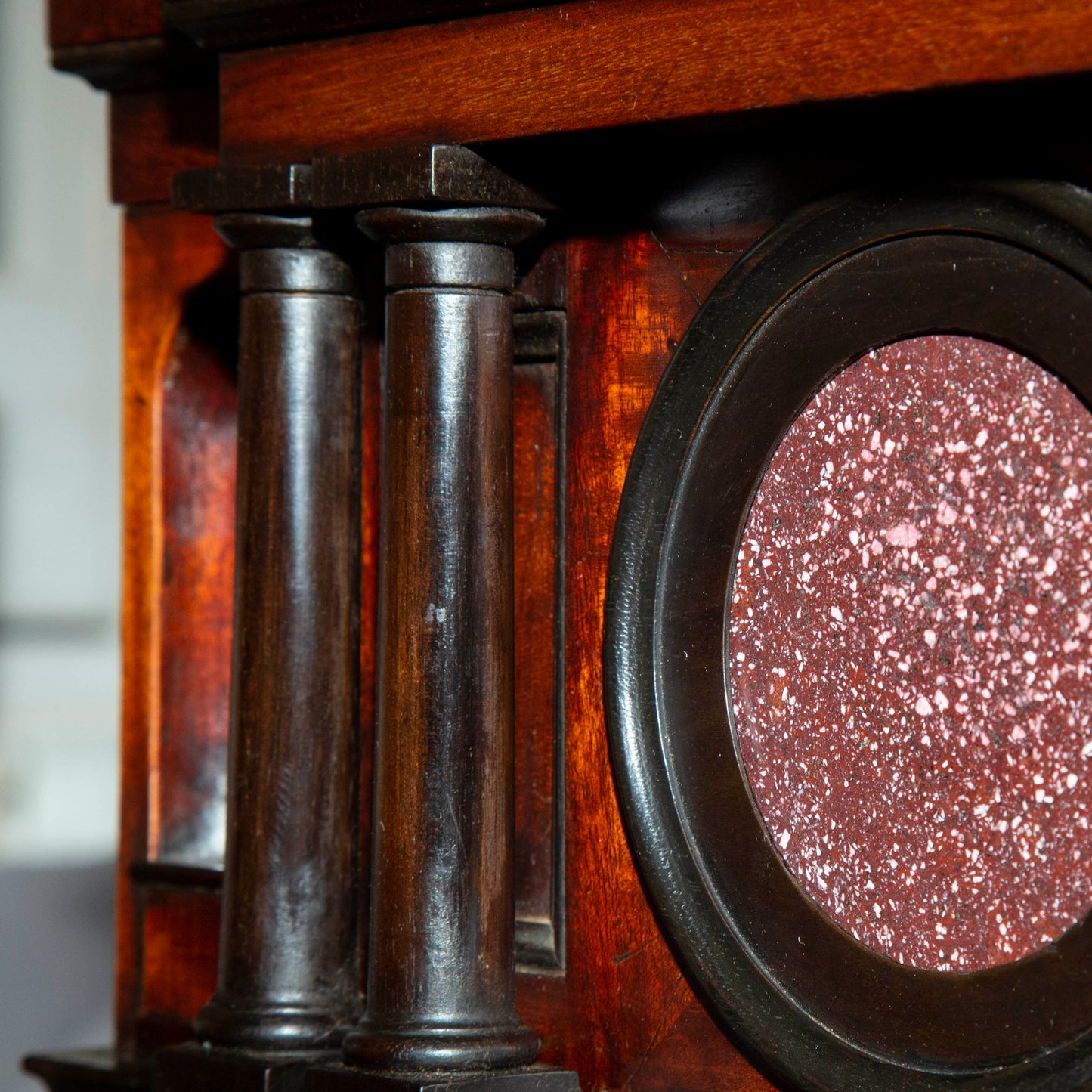
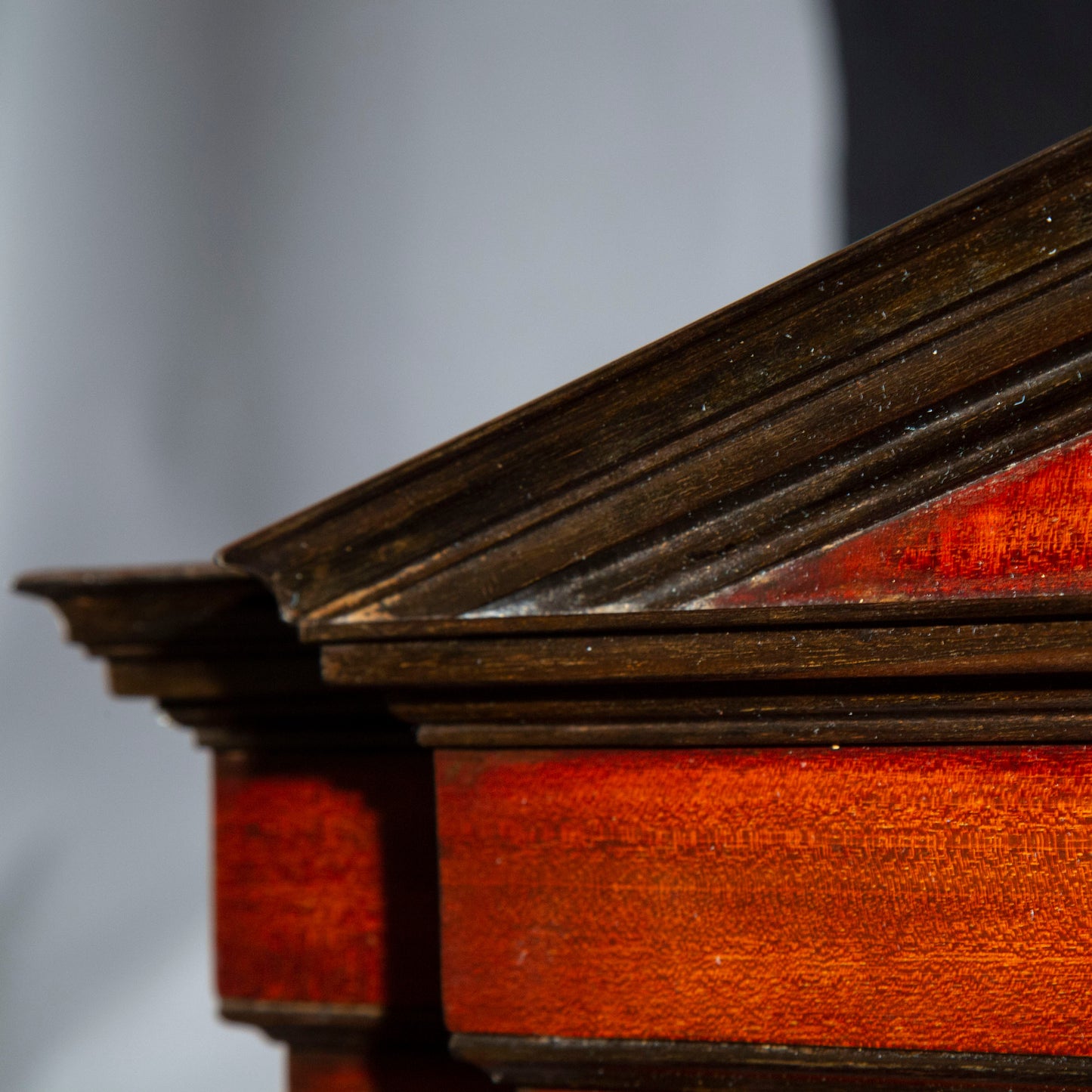
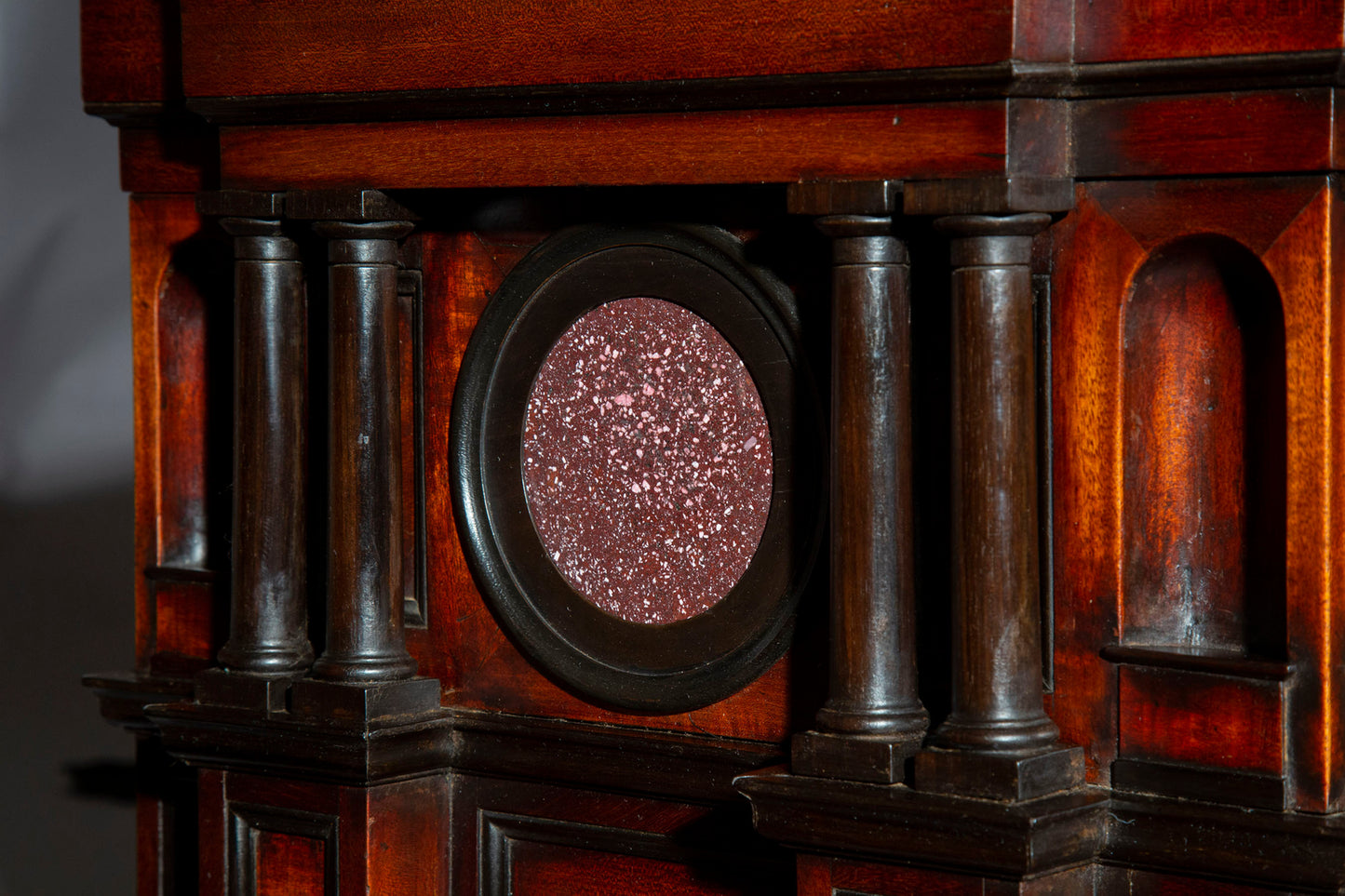
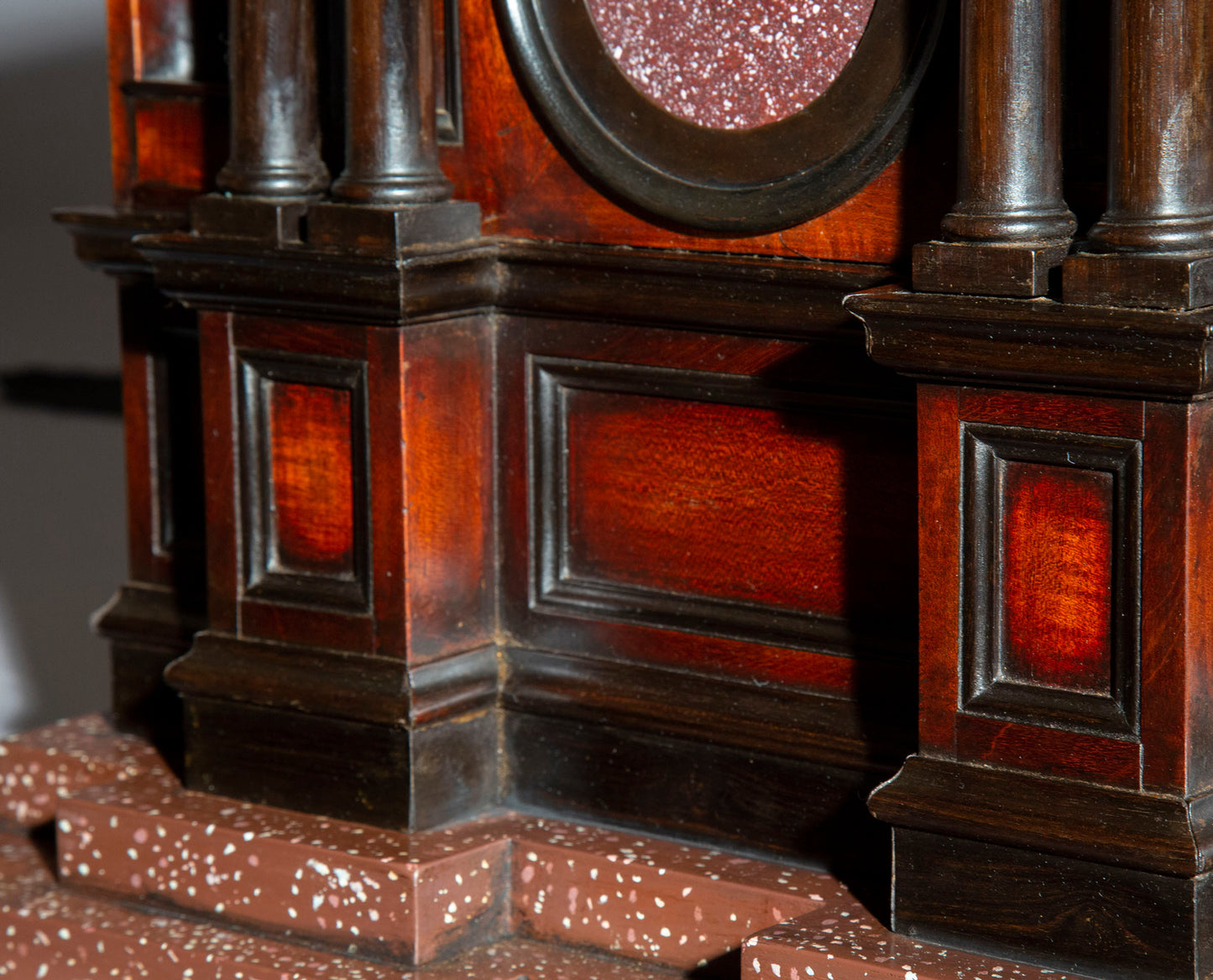

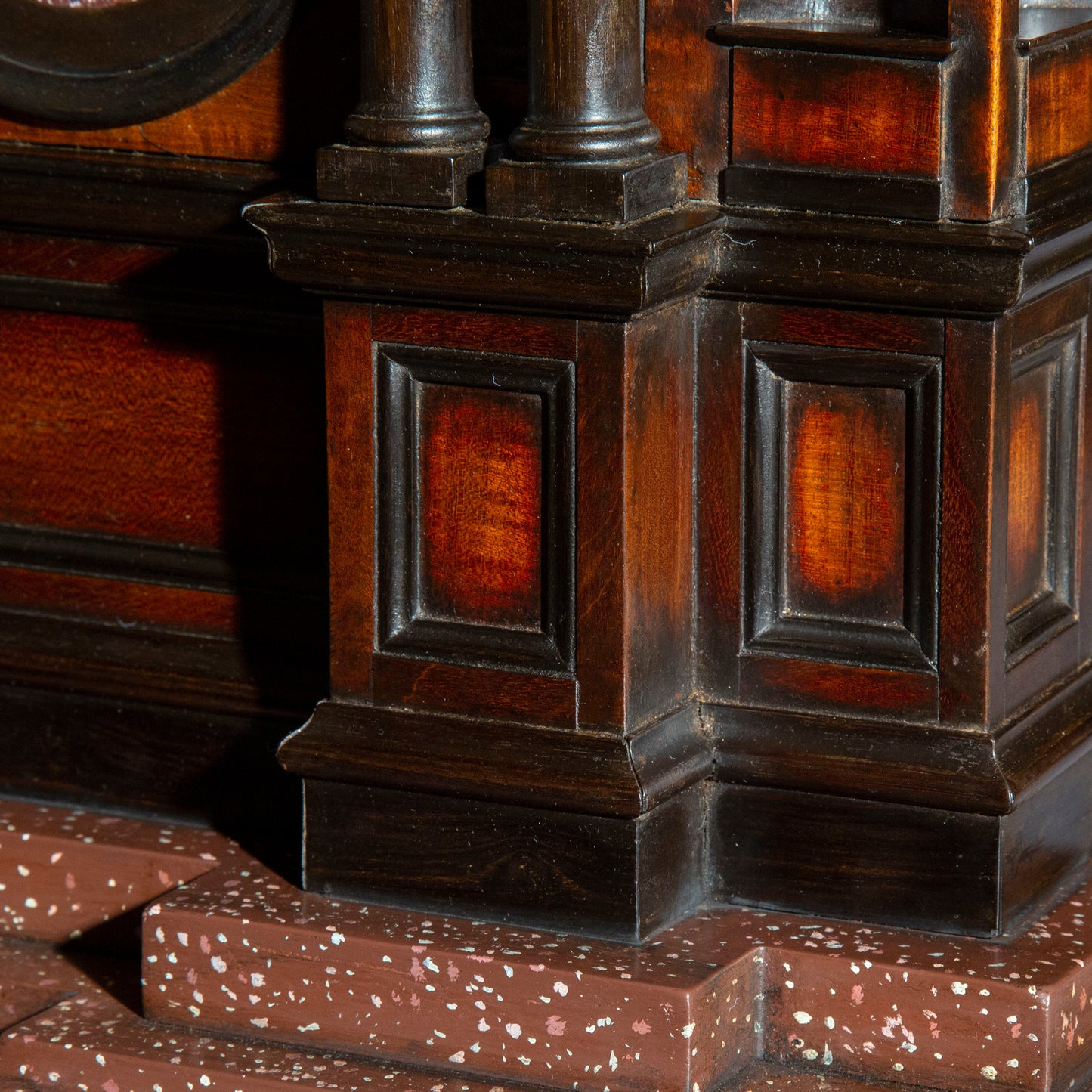
A superb quality George II period architectural model in mahogany and ebony, mounted with an Egyptian 'Imperial Porphyry' roundel.
England, circa 1750.
Why we love it
Exquisitely detailed throughout, this splendid object would have had a proud place in an Enlightenment era gentleman's library, along with the antiquities brought from the Grand Tour, natural history specimens, scientific instruments and books.
Mounted with a porphyry roundel, on a simulated porphyry base. 'Imperial Porphyry' comes from 600 million-year-old volcanic rock from Gabal Abu Dukhan quarry in the Eastern Desert of Egypt which was discovered by Romans in AD 18. It is highly prized for its rarity and noble 'Imperial' purple colour, a symbol of power. Pieces such as this roundel were often cut from broken ancient pieces, excavated and 'upcycled' in the 17th-18th centuries.
Beautifully designed in the classical tradition, introduced by Andrea Palladio (1508–1580) and promoted in Britain by William Kent (1685–1748), this model represents a facade or altar, and was possibly made to showcase the extraordinary skills of the craftsman.
